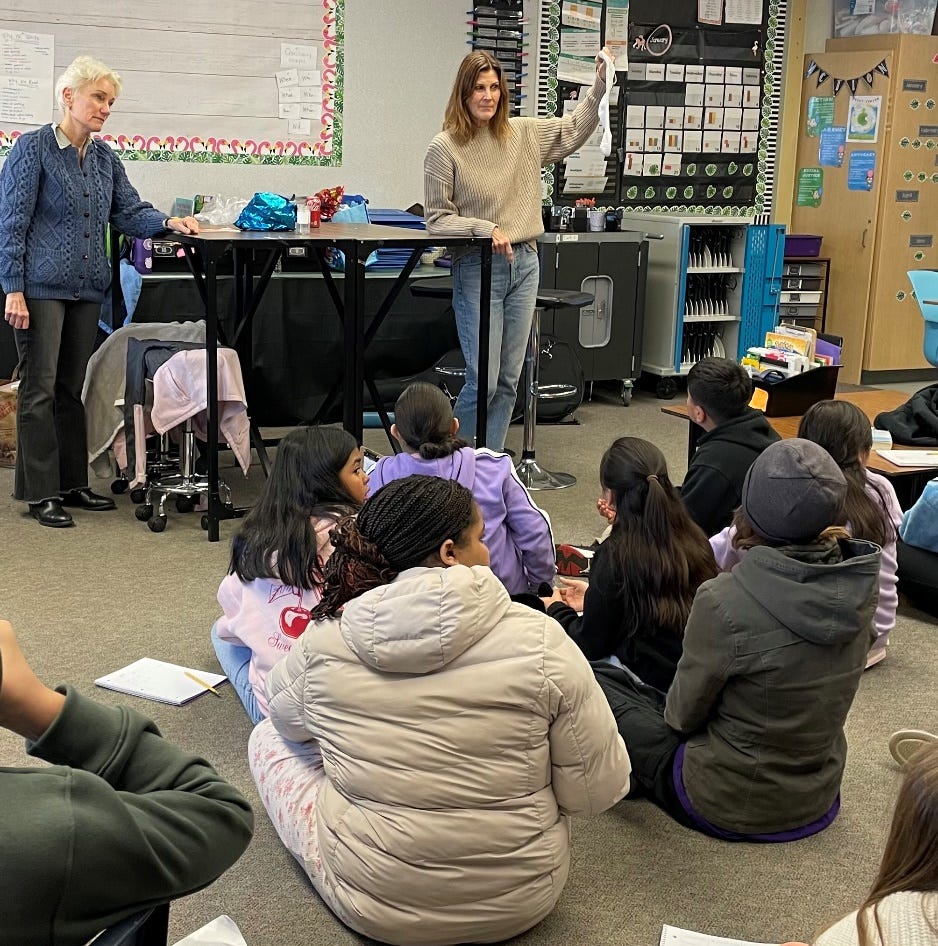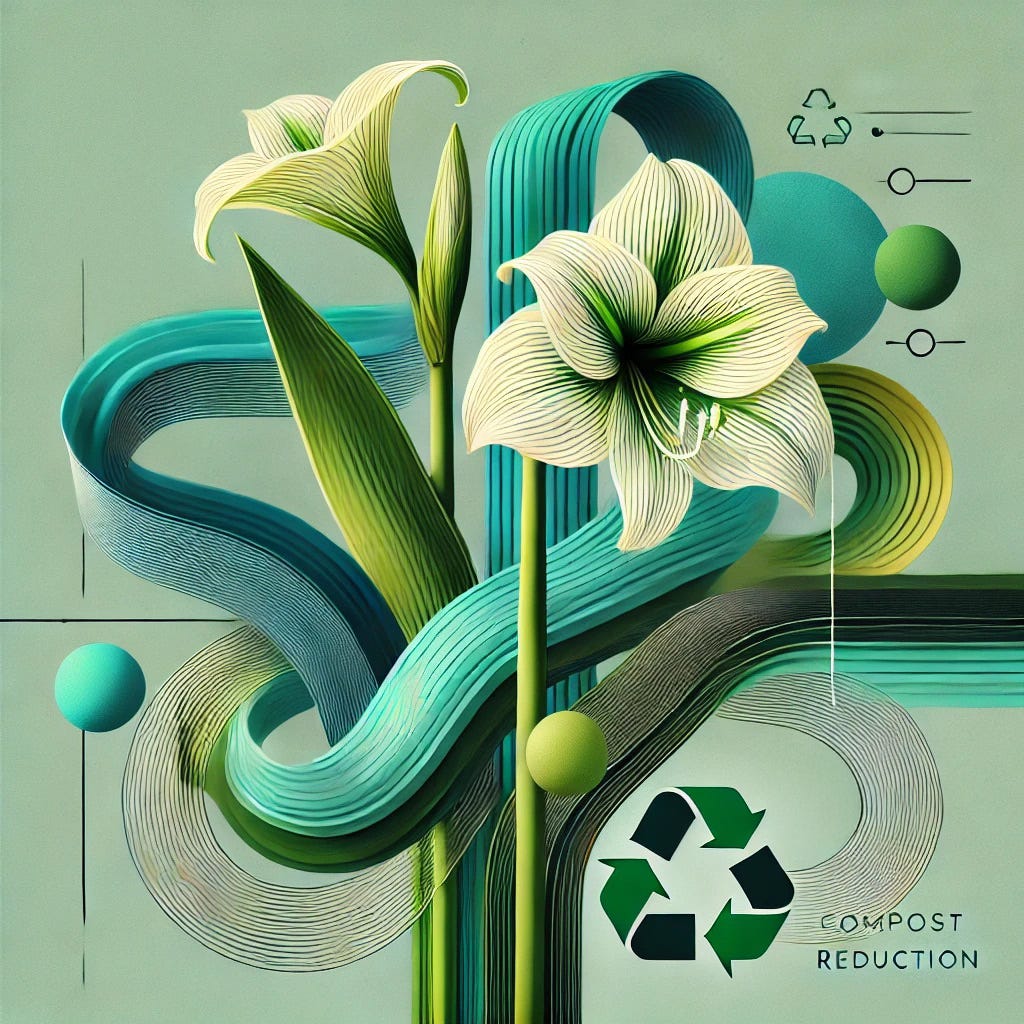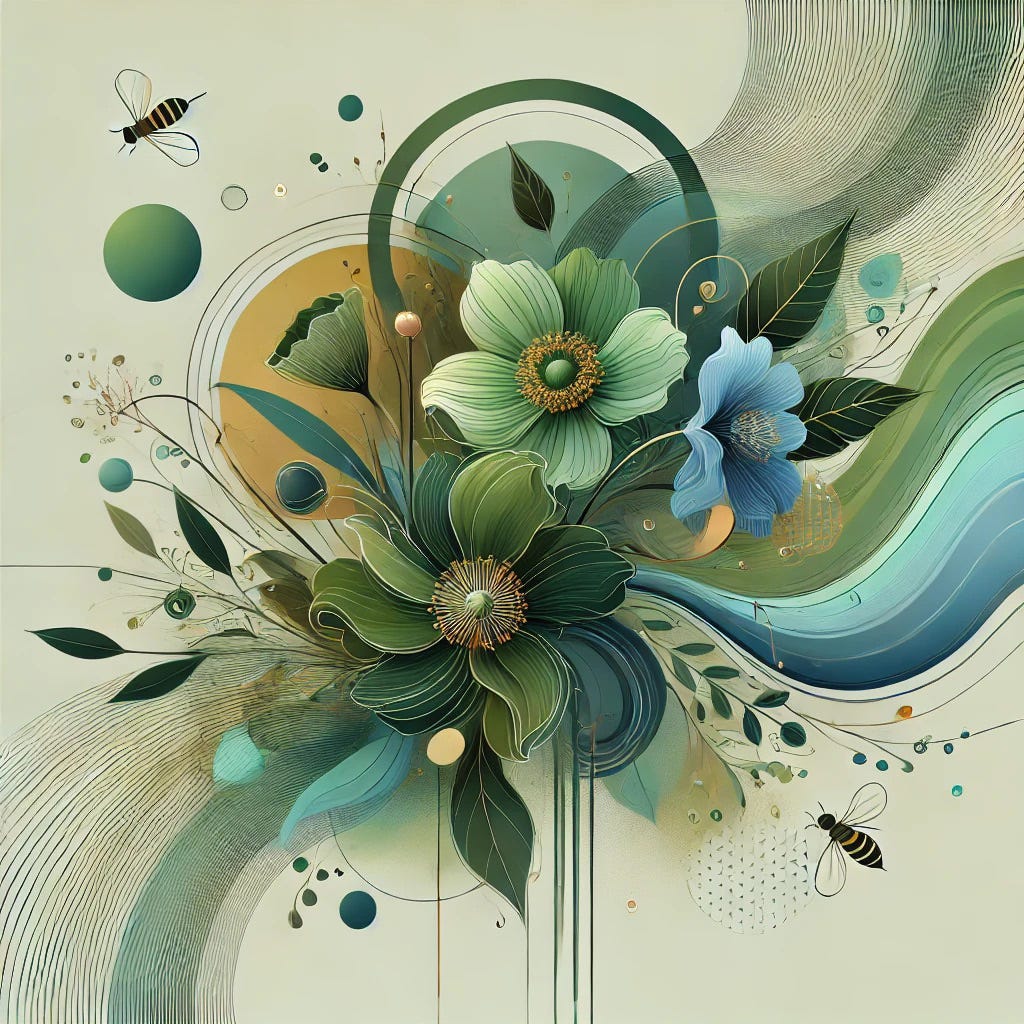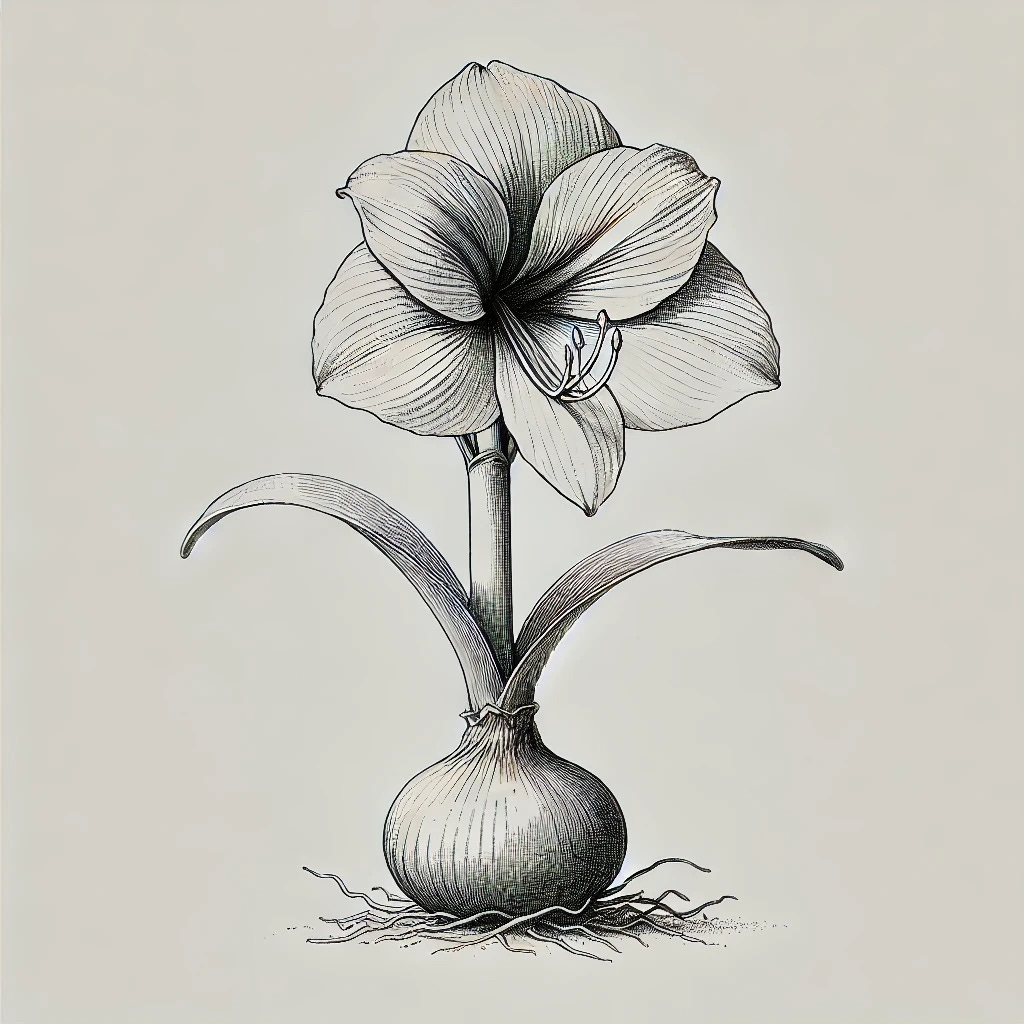Green Wednesday: Keeping Amaryllis Blooming & 'Trash Talk' With Kids
By Chris Benz, Environmental Contributor and Penny Pawl, UC Master Gardener of Napa County
Support Napa Valley Features – Become a Paid Subscriber Today
If you’re reading this, you value independent, ad-free journalism that focuses on our region’s stories — reporting that isn’t driven by corporate interests or clickbait. But we can’t do it without you.
Local newsrooms are shrinking, and many publications are being sold, scaled back or consolidated. Your support keeps Napa Valley Features alive.
Join our community of readers who believe in local, quality journalism. Become a paid subscriber today — and if you already are, thank you! Help us grow by liking, commenting and sharing our work.
Green Wednesday: Gardening and Climate Insights
Every Wednesday, Napa Valley Features brings you Green Wednesday, featuring articles from environmental voices and the UC Master Gardeners of Napa County. These contributors share research-based horticultural advice and insights on sustainability and climate topics relevant to our region.
Summary of Today’s Stories
"Keep Your Amaryllis Blooming" by Penny Pawl, UC Master Gardener of Napa County: Discover how to care for waxed amaryllis bulbs, encourage reblooming and decide whether to replant or discard them after flowering.
"Some websites say to throw the amaryllis bulb away after it blooms, but others suggest planting it in soil, as I did. A friend told me she has kept a waxed amaryllis in its wax for three years and it continues to bloom. So the choice is yours." - Penny Pawl
"Teaching Kids to 'Talk Trash' by Chris Benz, Environmental Contributor: Napa Climate NOW! volunteers are educating local students about proper waste sorting and landfill diversion, helping them develop lifelong habits for reducing environmental impact.
"When something is thrown away, there is no ‘away.’ It should go into the proper container so it can be turned into something and reused." - Chris Benz
Teaching Kids to “Talk Trash”
By Chris Benz
NAPA VALLEY, Calif. — Chris McClure leads a team of Napa Climate NOW! volunteers who teach school kids to “talk trash,” or rather to talk about trash — how to dispose of it responsibly and why that’s important for the planet.

McClure, a nurse at Queen of the Valley Medical Center and 40-year Napa resident, was inspired after watching Cafeteria Culture’s movie, “Microplastic Madness.” It featured fifth-grade students in Brooklyn who learned about toxic and polluting single-use plastics and successfully campaigned for a Plastic Free Lunch Day. The film showed students sorting trash to reduce landfill waste.
“Why can’t we do that in Napa, I thought,” McClure said.
In April 2024, McClure and her fellow volunteers visited the third-grade classes at Vichy Elementary School to pilot their waste-reduction lesson. During the fall, the team worked with fourth- and fifth-grade classes at Napa Valley Language Academy.
McClure partners with the City of Napa’s Solid Waste and Recycling Division. Courtney Cayford, the city’s Recycling Program Associate, contacts school principals, schedules classroom visits and follows up with teachers and staff.
“The volunteers break up the students into small groups of four to five,” Cayford said. “This is extremely helpful. One volunteer works with each group.”
The exercise is like a game, she said.
“There are cutouts for each type of waste bin: compost, recycling and landfill. Each group has a bag of collected materials such as a plastic bag, pizza box, milk carton, etc. The student will blindly reach in, select an object and tell the group where they think it belongs and why. It’s fun and interactive.”
A second activity, “How Long Does This Take to Decompose?” features items ranging from apple cores (two months) to mylar balloons (never), demonstrating that when something is thrown out, it still sticks around.
During Cayford’s follow-up visits, she saw that the training helped the teachers as well as the students.
“I had teachers reach out to ask how they can continue this education with their students or if there are other things they can be doing,” she said. “That is an accomplishment — awareness is the first step to making a change.”
Getting schools to reduce waste is critical because Napa schools are collectively the largest producer of waste in the city, according to Napa Recycling and Waste Services. As part of its Short-Lived Climate Pollutants Reduction Strategy, California set waste diversion goals to reduce organic waste going into landfills because this produces the super-pollutant methane.

In the 2023-2024 school year, Napa schools diverted 51.5% of their waste from the landfill to compost or recycling. The goal of the city and state is to divert 75%. Efforts like those of the Napa Climate NOW! volunteers play a vital role.
Naama Brenner-Abramovitch, Napa Recycling’s recycling specialist, pointed out that the word “trash” is no longer the proper term. She says a more accurate term is “resource.”
“What these volunteers are doing is amazing,” Brenner-Abramovitch said. “They’re giving kids skills to help educate their parents on how to sort these resources better. When something is thrown away, there is no ‘away.’ It should go into the proper container so it can be turned into something and reused. The apple core tossed into the school compost container today will be turned into compost in 62 days, which will come back to the school for its garden.”
McClure agrees, “If we can get the kids engaged now and aware of how to be responsible for their waste, then bit by bit, we’ll see improvements.” Her goal is to provide the training to all Napa fourth-graders this year.
Other actions in local schools:
Plastic Free Lunch Day for all NVUSD schools, April 22
Student trash monitor programs (e.g., Green Rangers at Vichy and the Green Team at Napa Valley Language Academy)
Stonebridge School has eliminated single-use plastic utensils by providing reusable flatware
Napa is installing updated signage at schools for compost/recycling/landfill bins to better reflect the food and packaging items in use
Explore These Related Articles:
Browse All Napa Valley Features Stories
—
Chris Benz is a retired winemaker and co-founder of Napa Climate NOW! Napa Climate NOW! is a local nonprofit citizens’ group advocating for smart climate solutions based on the latest climate science, part of 350 Bay Area. Info: napa.350bayarea.org
Keep Your Amaryllis Blooming
By Penny Pawl
NAPA VALLEY, Calif. — Last year at holiday time I was given a most unusual gift: an amaryllis bulb encased in wax. I had no idea such a thing existed, so I immediately looked online for how to care for it.
Amaryllis bulbs are sealed in colored wax in Holland with only the leaf end visible. While they remain in the wax, they don’t need water but should be kept in a warm, well-lit place. My present was a red-blooming amaryllis in red wax, but a friend posted a picture of hers, which was a white-flowered amaryllis in white wax.
Initially some leaves appeared, then two flower stems emerged seemingly overnight. The leaves never did grow beyond 4 to 5 inches. The flower stems developed wonderful red blooms that made a big display.
The bulbs I received had all the nutrients they needed to bloom. But I needed to know what to do when the blooms started to fade.
Once the flowers on one stem faded, I cut back the stem to the wax coating. The wax was cracking, but I decided to wait until the other flowers faded before removing it. Then, as instructed, I would remove the wax and plant the bulbs in soil.
A few days later the remaining flowers had died down and I cut the stem off. I could see the wax breaking up on top. Because there were two flower stalks, I had assumed there were two bulbs, but there was only one—a large one about the size of a softball. I had read that you can leave the bulbs in the wax and they might bloom again, but I decided that I would remove it carefully.
On the break-free day, as I began to remove the wax, I realized that ordinary kitchen shears were not up to the job. I used a heavy pair, and it was still quite a task. When I finally got all the wax off, I was surprised to see that the bulb had no roots. It looked as if they had been cut off.
As for planting the bulb, I followed the instructions of fellow Napa County Master Gardener Cindy Watter. Before planting the bulb in soil, I looked it over. It had some soft spots, possible signs of rot. I left the spots alone, but I did remove the outer layers of dead skin.
After planting the bulb in a pot, I put the pot in my passive-solar hothouse, gave it a dose of worm compost and watered it. To force a rebloom, the potted bulbs should be kept in darkness for six to eight weeks to store energy. Be sure to water them during that time; don’t let them dry out. When they are moved to a sunny location, the light stimulates the bulbs to bloom. I will be trying this technique on all my amaryllises as none of them bloomed this year.
Some websites say to throw the amaryllis bulb away after it blooms, but others suggest planting it in soil, as I did. A friend told me she has kept a waxed amaryllis in its wax for three years and it continues to bloom. So the choice is yours.
Do not water waxed bulbs; they may rot. If you repotted them in soil, keep the soil damp. Some sites recommend storing the bulbs in the dark. However, a friend told me she leaves it all year in her sunny kitchen garden window, watering occasionally.
Events
Library Talk: Join UC Master Gardeners of Napa County for a talk on “Planning a Cut Flower Garden,” on Thursday, March 6, from 7 to 8 p.m. via Zoom. This summer, your garden can include beautiful, colorful flowers to cut and bring into your home. Join the UC Master Gardeners of Napa County to learn about the best annuals, bi-annuals and perennials for cutting, along with soil preparation tips, starting seeds indoors and direct seeding techniques. Click here to register.
Workshop: Join UC Master Gardeners of Napa County for a workshop on “Spring and Summer Vegetables” on Saturday, March 8, from 10 a.m. to noon, at the University of California Cooperative Extension, 1710 Soscol Ave., Suite 4, Napa. Come get your hands dirty in this hands-on vegetable-growing workshop. Learn what to plant now and what to plant later when the weather warms. Soil prep, irrigation, seed starting, transplanting and potential problems: We’ll cover it all. Click here to register.
Help Desk: The Master Gardener Help Desk is available to answer your garden questions on Mondays and Fridays from 10 a.m. until 1 p.m. at the University of California Cooperative Extension Office, 1710 Soscol Ave., Suite 4, Napa. Or send your questions to mastergardeners@countyofnapa.org. Include your name, address, phone number and a brief description of the problem. For best results attach a photo.
Explore These Related Articles:
Browse All Napa Valley Features Stories
—
Penny Pawl is a UC Master Gardener of Napa County.
The views, opinions and data presented in these articles are those of the authors and do not necessarily reflect the official policy, position or perspective of Napa Valley Features or its editorial team. Any content provided by our authors is their own and is not intended to malign any group, organization, company or individual.
























My replanted bulb has sent up another flower that is turning red!!! plus a friend left hers in the wax and it is also sending up another flower.